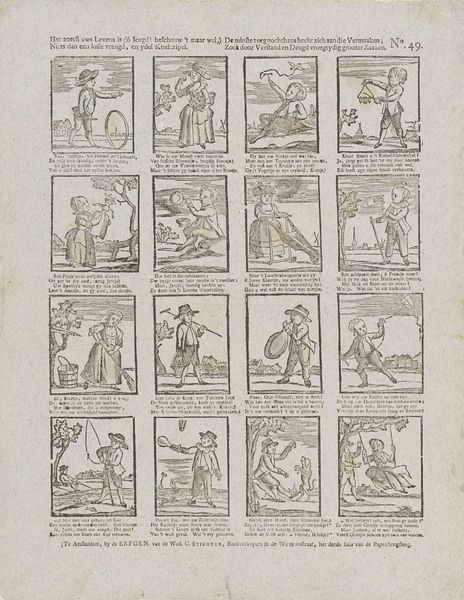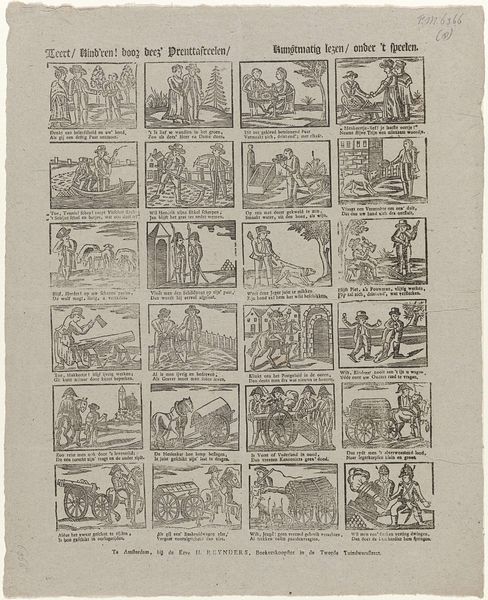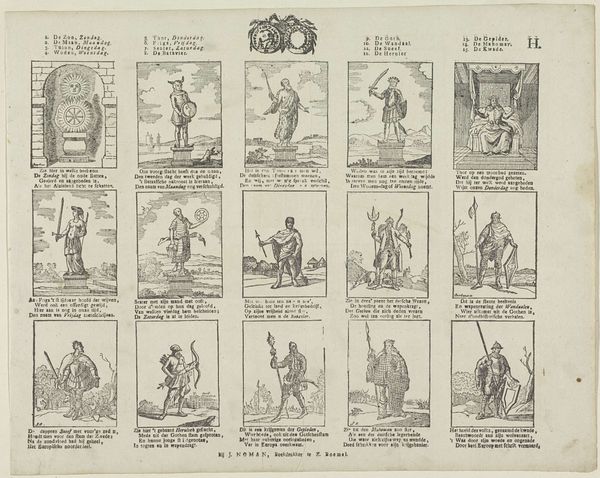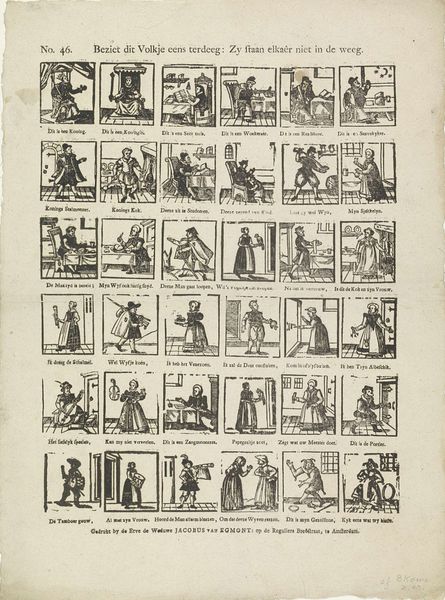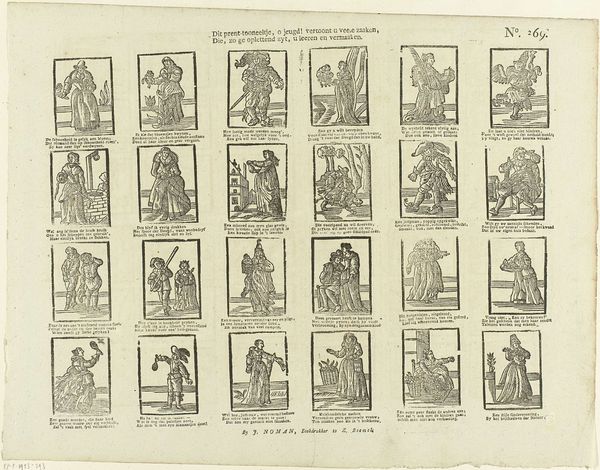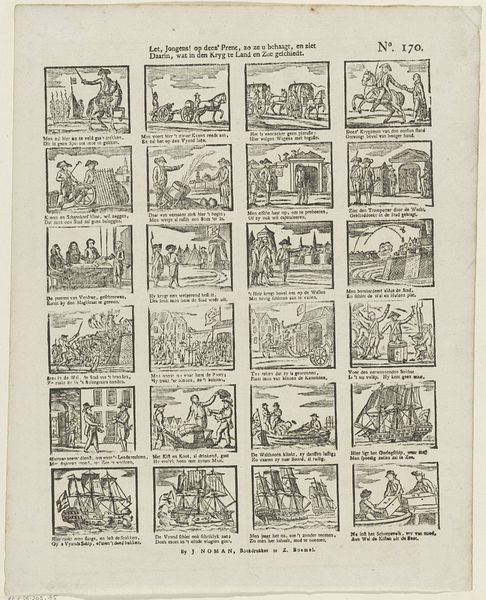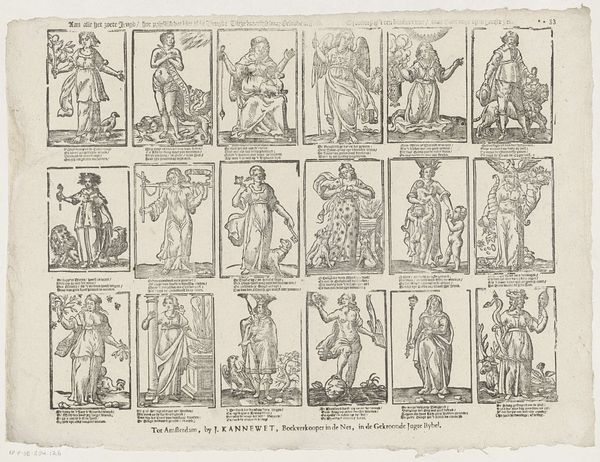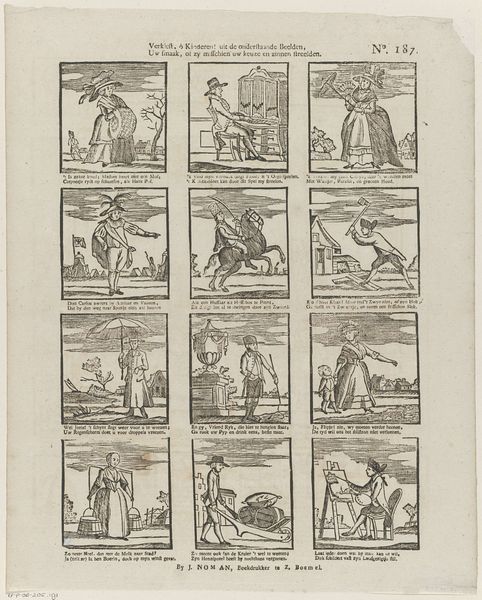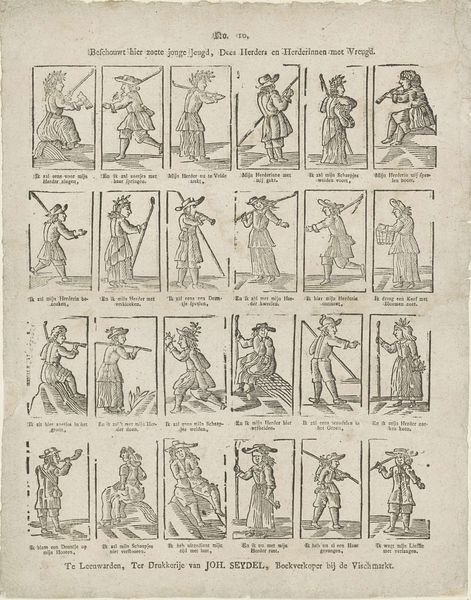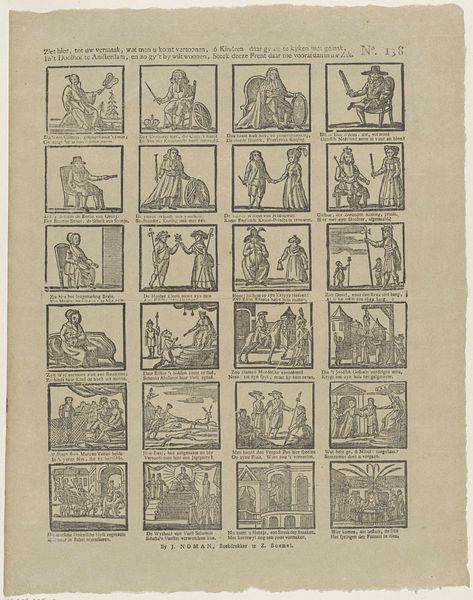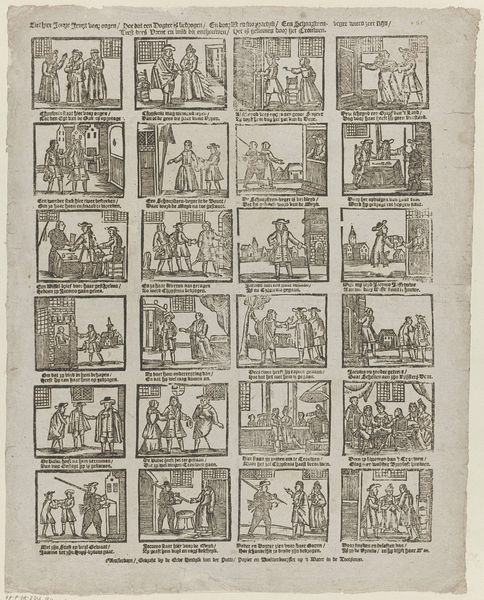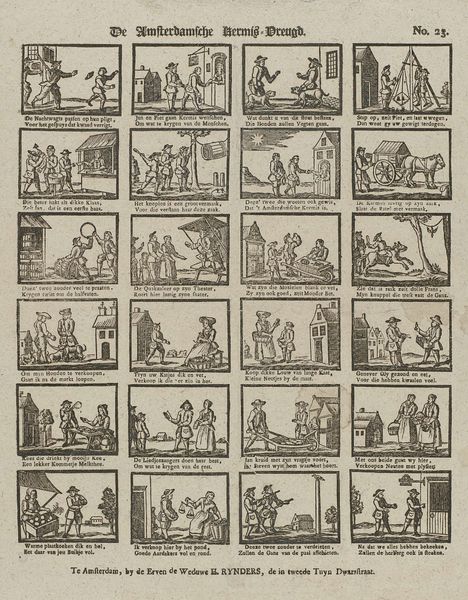
De beeldtenis dier valsche goden, / Waar aan men in den ouden tijd (...) 1784 - 1813
0:00
0:00
jansroortman
Rijksmuseum
Dimensions: height 398 mm, width 323 mm
Copyright: Rijks Museum: Open Domain
Curator: This engraving, created by Jan (Sr.) Oortman between 1784 and 1813, is titled "De beeldtenis dier valsche goden, / Waar aan men in den ouden tijd (...)". Editor: It feels like a series of vignettes, almost like a comic strip but rendered in this very precise, somewhat austere, graphic style. The use of black and white gives it a real sense of historical distance. Curator: The layout indeed lends itself to that impression, structuring the composition into neatly arranged compartments of figural depictions. As a piece of graphic art, it relies heavily on line and form to convey its subject matter, which is the portrayal of deities from different ancient cultures. It uses Baroque techniques, actually. Look at the detailing, or ornamentation. Editor: Given the historical context, what were these images used for? Was it about demonizing other beliefs, promoting Dutch values? Curator: Precisely! This was the time of the Dutch Republic, experiencing internal tension, the cultural shift of enlightenment ideas challenging established norms. Imagery depicting ancient gods could serve various ideological purposes from educating about classical history to criticizing what some perceived as "false idols," thereby bolstering their contemporary culture. Editor: So, the aesthetic—the clarity of line, the ordered arrangement—becomes a tool for delivering a particular message? It is indeed intriguing to analyze its cultural significance. Each panel has this contained narrative. What grabs my attention most is that the scenes are distinct—their clarity and lack of shadows, are unique—almost like viewing them through a taxonomic lens! Curator: Exactly. These individual portraits contribute to a broad socio-cultural narrative, speaking volumes about historical beliefs, knowledge, and cultural biases inherent in its time. These ancient belief systems have an internal structural language. Editor: What I find particularly compelling is the print's capacity to embody art and history—the formal elements, you know, create their own historical imprint through its narrative content. It creates new insight through new cultural connections! Curator: A stimulating encapsulation of artistic expression in the grand tapestry of social commentary, no doubt! Editor: I couldn’t agree more, its symbolic essence lingers beyond aesthetic form, enriching historical insights into the epoch.
Comments
No comments
Be the first to comment and join the conversation on the ultimate creative platform.
